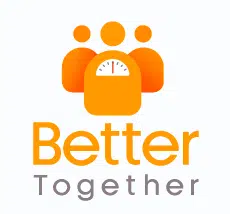Employee wellbeing is more than just a buzzword. It’s a vital aspect of any successful organization that cares about its people and its performance. Employee wellbeing refers to the physical, mental, and emotional health of employees, and how they feel about their work and their lives. A high level of employee wellbeing can lead to many benefits, such as:
- Increased productivity and creativity
- Reduced absenteeism and turnover
- Improved customer satisfaction and loyalty
- Enhanced employer brand and reputation
- Lower health care costs and risks
But how can employers create a culture of wellbeing in their workplaces? How can they support their employees to achieve their personal and professional goals, while also meeting the organizational objectives? How can they measure the impact of their wellbeing initiatives on their bottom line?
The answer is to implement an effective employee wellbeing program. An employee wellbeing program is a set of activities, policies, and benefits that aim to improve the wellbeing of employees and their families. An employee wellbeing program can include various elements, such as:
- Health screenings and assessments
- Fitness classes and memberships
- Nutrition counseling and education
- Stress management and resilience training
- Mental health support and counseling
- Financial wellness and education
- Social events and activities
- Recognition and rewards
- Volunteer opportunities and community involvement
However, not all employee wellbeing programs are created equal. Some are more comprehensive, engaging, and impactful than others. Some are more aligned with the needs, preferences, and values of the employees and the organization. Some are more sustainable, scalable, and adaptable than others.
So how can employers design and implement an effective employee wellbeing program that works for them? Here are some best practices to follow:
1. Assess the current state of employee wellbeing.
Before launching any wellbeing program, it’s essential to understand the current situation of employee wellbeing in the organization. This can be done by conducting surveys, interviews, focus groups, or other methods to gather employee feedback about their wellbeing needs, challenges, interests, and expectations. This can also be done by analyzing data from existing sources, such as health claims, absenteeism records, performance reviews, or engagement surveys. The goal is to identify the strengths and gaps in employee wellbeing and the opportunities for improvement.
2. Define the goals and objectives of the employee wellbeing program.
Based on the assessment results, employers should define the specific goals and objectives of their employee wellbeing program. These should be SMART (specific, measurable, achievable, relevant, and time-bound), and aligned with the organizational vision, mission, values, and strategy. For example, some possible goals could be:
- To increase the percentage of employees who report high levels of physical activity by 10% in 12 months.
- To reduce the average stress level of employees by 15% in 6 months.
- To improve the employee engagement score by 20% in 9 months.
3. Design the employee wellbeing program based on evidence-based practices.
Once the goals and objectives are clear, employers should design the employee wellbeing program based on evidence-based practices that have been proven to work in similar contexts and populations. This means researching best practices from other organizations or industries that have implemented successful employee wellbeing programs or consulting experts or professionals who have experience in this field.
This also means choosing interventions that are appropriate for the target audience,
considering factors such as age, gender, culture, location, preferences, etc.
For example:
- If the goal is to increase physical activity among employees who work remotely or have sedentary jobs, then offering online fitness classes or wearable devices could be effective options.
- If the goal is to reduce stress among employees who face high work demands or deadlines, then providing mindfulness training or relaxation techniques could be helpful solutions.
- If the goal is to improve engagement among employees who feel isolated or disconnected, then organizing social events or peer support groups could be beneficial strategies.
4. Communicate and promote the employee wellbeing program effectively.
A key factor for the success of any employee wellbeing program is communication and promotion. Employees need to know what the program is about, why it matters, how it works, what it offers, and how they can participate. Employers should use various channels and methods to communicate and promote the program, such as emails, newsletters, intranet, social media, webinars, posters, flyers, etc.
Employers should also use different messages and tones to appeal to different segments of employees, such as highlighting the benefits, the fun, the convenience, the social impact, or the recognition of participating in the program.
5. Implement and evaluate the employee wellbeing program regularly.
Finally, employers should implement and evaluate the employee wellbeing program regularly to ensure its effectiveness and efficiency. Employers should monitor and measure the progress and outcomes of the program using various indicators, such as participation rates, satisfaction levels, behavior changes, health outcomes, performance outcomes, or return on investment.
Employers should also collect feedback from employees about their experiences,
challenges, suggestions, or testimonials regarding the program.
Employers should use this data and feedback to review and improve the program as needed, such as adding new features, removing ineffective elements, or adapting to changing needs or circumstances.
An effective employee wellbeing program can be a powerful tool for employers to create a positive work environment that supports their employees’ health and happiness. However, designing and implementing such a program requires careful planning, research, communication, and evaluation. If you are looking for a simple, engaging, and impactful employee wellbeing program that helps your employees reduce loneliness and increase social connection while also improving their physical and mental health, then you should check out BetterTogether.
BetterTogether is an innovative app that connects your employees with like-minded peers who share similar interests and goals. BetterTogether helps your employees discover new activities and hobbies that they can enjoy together with their peers, such as yoga, cooking, reading, or gardening. It is more than just an app.
It’s a community of people who care about each other and support each other to live healthier and happier lives.
To learn more about BetterTogether for businesses and how it can help your organization achieve its employee wellbeing goals visit today.









